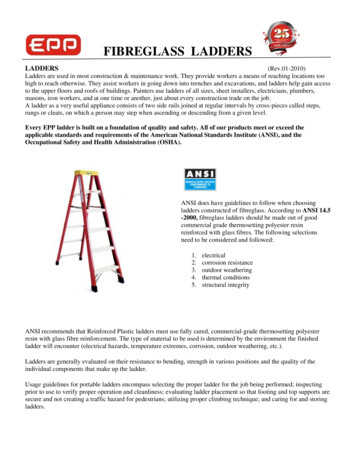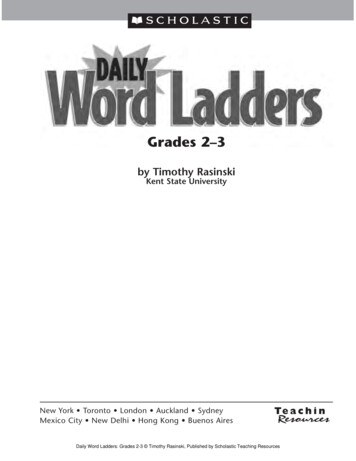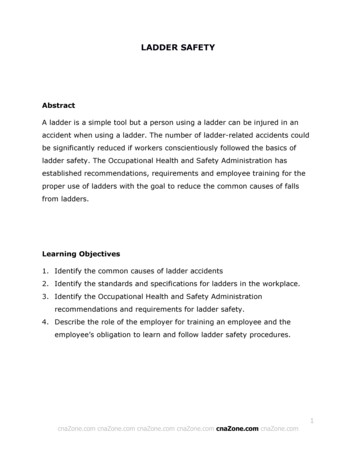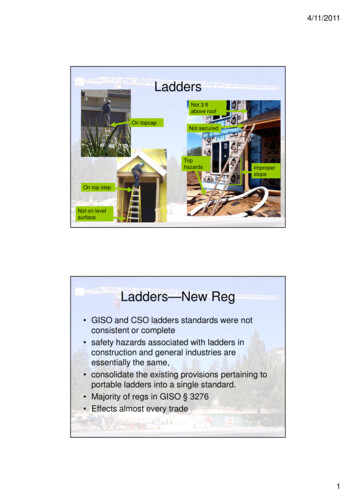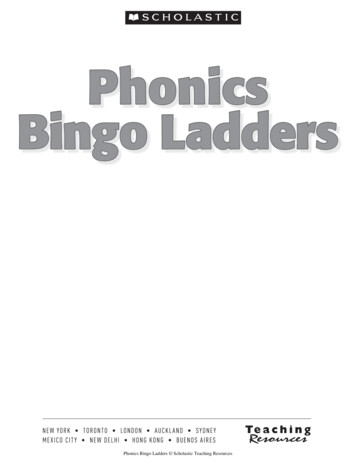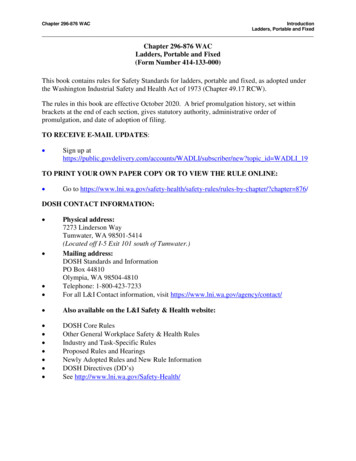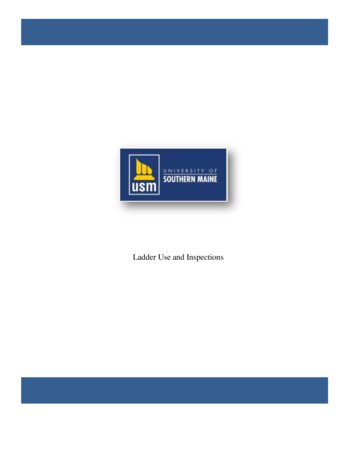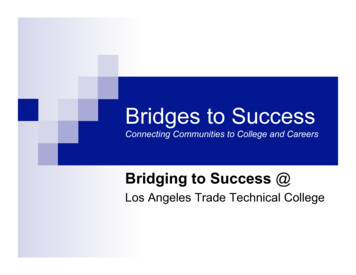
Transcription
Bridges to SuccessConnecting Communities to College and CareersBridging to Success @Los Angeles Trade Technical College
Los Angeles Trade TechnicalCollege
Bridges to Success “One-stop” Center – A mini-campus withincollege campus that targets: Youth- K-12 students, out-of-school youth (16-30) Immigrants/Second Language Learners Adult students who have not considered college Offer courses and support services on and offcampus (K-12 schools, CBO’s, FBO’s employers)Houses the Noncredit /Continuing EducationDepartment
Goals of Bridges to SuccessCollege Portal - Increase access to highereducation, workforce training throughnoncredit and credit program offerings Increase faculty and staff awareness ofthe service area and its residents Create a college-going culture Engage students and empower learners
Bridges to Success Programs & Funding 21st Century Program - LATTC Middle School Partners:Early College Program – Concurrent Enrollment HighSchoolCAHSEE to College – Targets non-graduates class of2006, 2007, 2008Career Advancement Academy – Targets contextualizedBasic SkillsState Basic Skills FundingCity of Los Angeles and Industry GrantsSection 231 Funding – Immigrant Learners, AdultSecondaryTitle V and HSI/STEM grantsNoncredit Matriculation and Perkins (VTEA)
Strategic Partnerships: City,County, Industry and Community Los Angeles Probation DepartmentLos Angeles Community Development Department/Youth Opportunity ProgramLos Angeles Department of Water and Power & SempraTrade UnionsLA County Office of EducationK-12 (Public and Charter – Over 25)A Friedman Occupational Center & East Los AngelesSkills CenterCommunity Based Organizations (Urban League,OneLA)
Workforce Training Needs of theUtilities IndustryEmployment shortages due to largenumber of incumbent workers projected toretire in next 5-7 years Utilities and construction industriescompete from same small labor pool ofskilled workers Increased demand for renewable energyand energy efficiency Source: Utility Industry Sector Report, Los Angeles, July 2008
Program GoalTo create an industry-driven careertraining pathway providing adults the fullrange of skills and competencies neededto secure entry-level jobs and enterapprenticeships or other continuingeducation training programs with publicand private utilities, unions andconstruction trades employers
What We Wanted to Achieve Develop students’ interests and aptitudes incareers in the utilities industry and constructiontrades through career exploration and appliedlearningStrengthen students’ reading and computationalbasic skills through contextualized instructionIncrease students’ work readiness skills andcapacities enabling them to successfully secureemployment in entry-level positions, sustainemployment and advance their career andeducational goals
Overview of UCP Program 8-week, 315-hour intensive training program (MonFri from 6:30am-3pm)Employer-driven curriculumPartner collaboration and integration throughoutprogramUphold workplace and college success standardsCollaboration with support-service providersEmployment testing and placement assistanceCoordination with credit disciplines in supportingstudents to continue their education and training
Determining the PathwaysReview labor market information – need to be crediblewith target students in whatever program you develop2. Select departments that have “impacted studentenrollment (e.g. Allied Health, Construction) OR3. Additional strategy- Work with departments that have lowenrollment as mechanism to get students into first orsecond semester courses4. Build momentum .start with one program one win andlet faculty chair be “endorser”1.
Program Funding Sources One of a series of LATTC programs funded bythe Career Advancement Academy GrantFunds used for start up and design ofcontextualized trainingLeverage additional funding throughpartnershipsPartners help subsidize some costsNoncredit Enrollment generated by the classeswill sustain the program (majority of funding)
Administrator Role: SupportingFaculty, Staff and Students Strong Administrative Support – develop faculty,staff and students to provide supportHigh Expectations & High Levels of SupportDevelopment of Academic CommunityProvide comp time, stipends and other incentive(know what motivates your faculty)
Lessons Learned Change College Culture (Cross training, onestop, eliminating silos)Prepare College Faculty to Serve Youth forCareer and Technical Education DemandDevelop and Maintain Partnerships (internal andexternal)Establish key contacts and collaborationsIdentify, train, and work with faculty from eachdepartment to ensure the work we’re doing issustainable
Bridges to Success Programs & Funding 21st Century Program - LATTC Middle School Partners: Early College Program - Concurrent Enrollment High School CAHSEE to College - Targets non-graduates class of 2006, 2007, 2008 Career Advancement Academy - Targets contextualized Basic Skills State Basic Skills Funding
